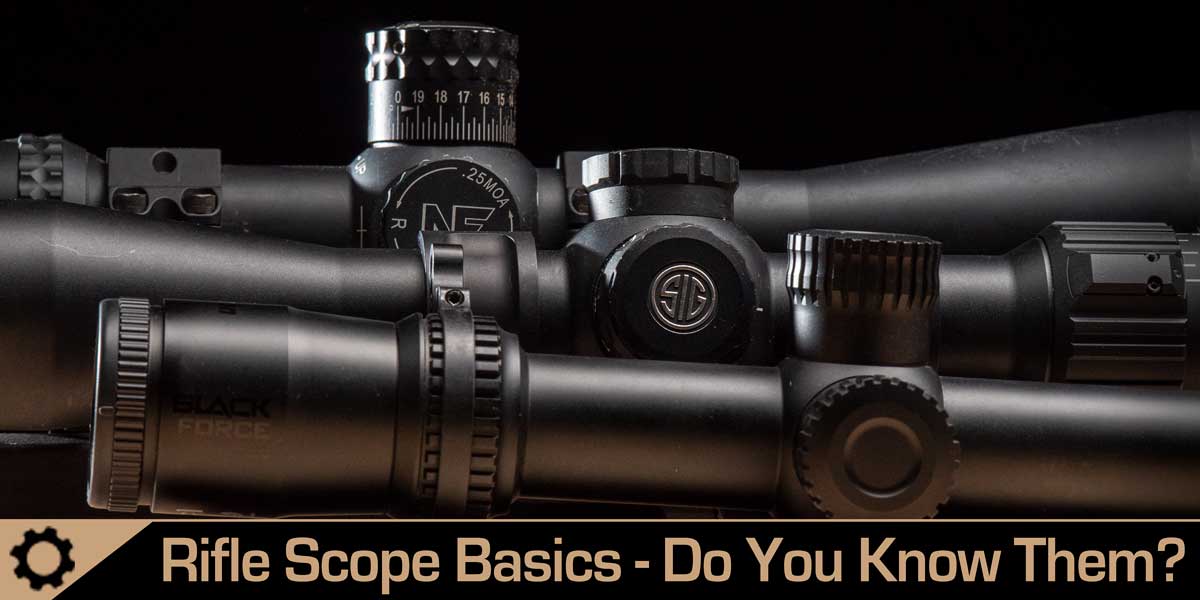
Want to know how to choose a rifle scope in 2020? Optics technology has evolved a great deal in the last few years. With new shooters and hunter flooding into the scene we thought it would be a good time to revisit the basics of magnified options. We hope this will help you sort what what scope you should get.
Magnification Range
You probably know you can find rifle scopes with an variety of magnification ranges. That’s a good thing, since we use rifle scopes for different purposes. Some scopes have greater magnification than others, and some scopes will have great magnification ranges than others.Magnification itself is pretty simple. It’s simply a measurement of of the relative size of what you see the the rifle scope. “3x” means the object appears three times bigger than real life.
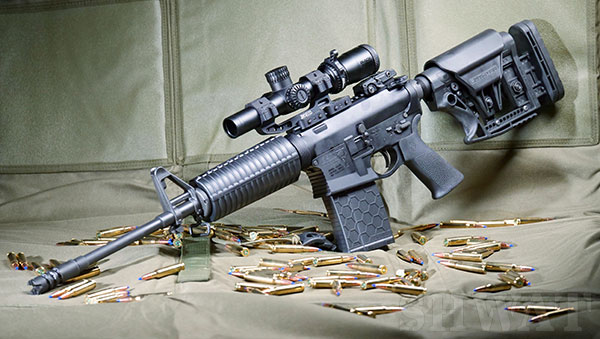
Most people will choose rifle scopes with a variable degree of magnification. For example, a 3-9x magnification range is quite modest. Your minimum magnification is 3x, your maximum is 9x. 9x is triple the magnification of 3x, of course.
A 3.5-15x magnification range gives you many more options when using your scope. Typically, the greater the magnification range, the more expensive the rifle scope. You can buy fixed scopes with a set magnification (like a 4x Trijicon ACOG) for less than a comparative scope with a broad magnification range. The key word there is “comparative.” There’s nothing inexpensive about an ACOG, but that’s an exception to the rule.
Rifle Scope Brightness
The objective lens is the light gathering element at the front of the rifle scope. The more light the scope gathers, the easier it is to see through the scope. This is especially relevant in low-light conditions, like when you’re firing at dusk or dawn. Objective lenses with a greater diameter can gather more light.
Without getting too deeply into the physics of everything, you’ll want to note that as magnification increases the amount of light reaching your eye goes down.
This is a high end optic with a broad magnification range.
Light transmission determines how bright your scope is. More is better, and one thing that limits how bright your rifle scope can be is its tube diameter. The tube would be the segment of your scope behind the objective lens and in front of the rear lens. apart from the quality of the glass, is the tube diameter. A 44 mm objective lens is perfect for a 30mm tube. But a 56mm objective lens can transmit less light through a 1”tube than a 40mm lens will through a 30mm tube. This is why we have seen a trend toward larger body diameters in professional-level scopes. For the average hunter, this can translate into a recommendation to save your money and buy a scope with a smaller objective lens.
The circle of light you see through the eyepiece is known as the exit pupil. The biggest exit pupil you should ever need is around 7 mm – the maximum dilation of the human eye. As you age, your eyes lose some of their ability to dilate, so you need less of an exit pupil. That said, a larger exit pupil means you’ll have more leeway in how your eye is positioned.
The greater the objective lens’ diameter, the larger the exit pupil you can have at any given magnification. There are, however, a number of disadvantages to objective lenses with large diameters. Chiefly, the scope becomes bulkier and mounting options need to be more specific; this can mean greater ring height is necessary to mount the scope. This, in turn, changes your cheek weld – sometimes the scope is so high up, you might be better off calling it a chin weld.
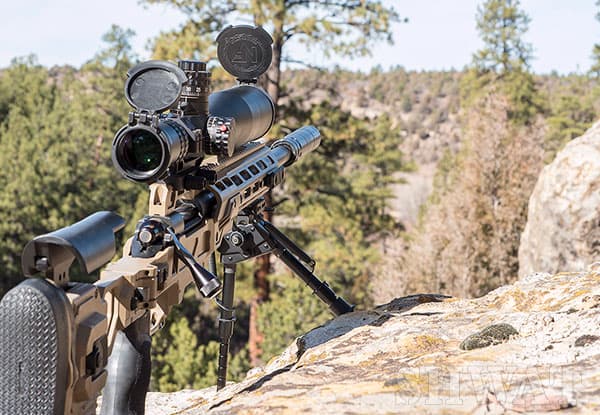
Lots of whistles and bells on this scope, a good fit for this rifle
What is Eye Relief?
Eye relief is a concept related to everything we’ve just discussed – it’s the distance between your eye and the scope. You need a decent amount of eye relief so that recoil doesn’t cause the scope to hit your eye. That’s never fun! Generally, rifle scopes will have an eye relief of somewhere between 76 and 102 mm (3 and 4 inches). To test eye relief, always mount your scope at its highest power, then take the shooting position you would normally take if you were out hunting.
Parallax
Many hunters and recreational shooters have never experienced parallax – it’s a concept that generally only comes up if you’re hunting at close range. The phenomenon can be spotted if you’re moving your head and the crosshairs of your sight seem to move off of the target. Most scopes come with a degree of parallax resistance – they might be parallax- free at a range of about 137 metres (150 yards). You might also miss seeing parallax even when it does occur. On most 3-9x sights, parallax will affect your shooting by less than 25 mm (1 inch).
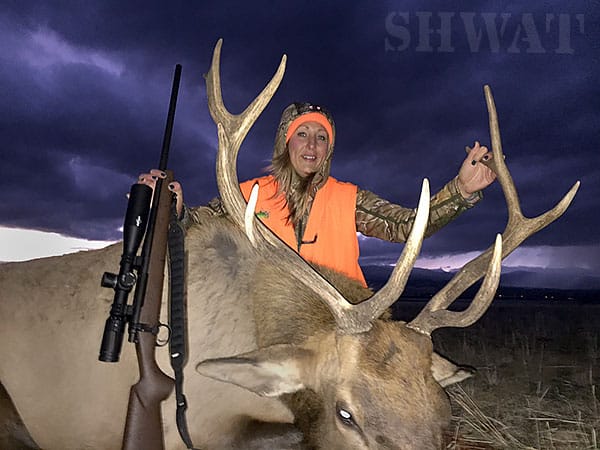
Long Range Hunting or Big Game Hunting you won’t want to compromise much on your scope.
This means that unless you’re doing very precise or very close-up shooting, you likely won’t need to worry about parallax. That said, there are a number of scopes that come with a parallax adjustment knob; these devices can change the range at which the scope is parallax-free and are sometimes misunderstood as focus knobs.
Lenses and Coatings
Here, you typically get what you pay for. You’ll want low-dispersion glass – you can get extra-low and ultra-low dispersion as well, at an added cost. The primary reason to get high-quality glass is to reduce a phenomenon known as chromatic aberration in which colors don’t all focus on the same point. The most noticeable result will be a loss of image sharpness. Lens coatings should make your scope fog proof and waterproof; multiple coatings generally indicate superior optics when compared to glass with just a single coating.
Other Considerations
There’s a lot more that you can think about when it comes to getting a scope. What kind of reticle do you want? Should you get bullet drop compensation? Keep in mind that more sophisticated scopes invariably cost more money.
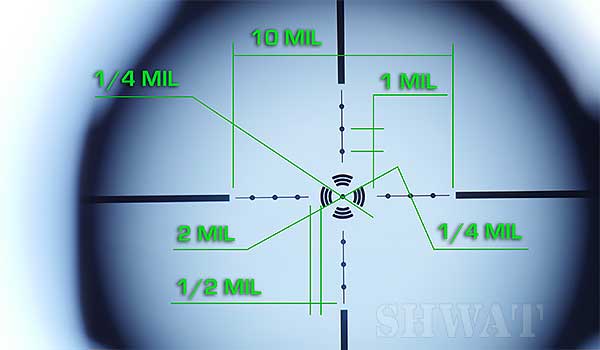
There’s a lot going on in the reticle. You don’t need to know exactly how it all works to use it though.
Spend the time to research your options and you’ll get a scope that works well and you enjoy shooting with. You may find it’s worth spending a bit extra on a scope that suits your particular needs; a good scope will last you a long time.
We’d like to thank Insite Arms, a Canadian custom rifle builder, for sending this rifle scope basics guide over. As of this publication, the Canadian government has announced they are banning ARs and other widely owned guns. What a disappointment! So a huge shout out to all our Canadian friends is in order!

